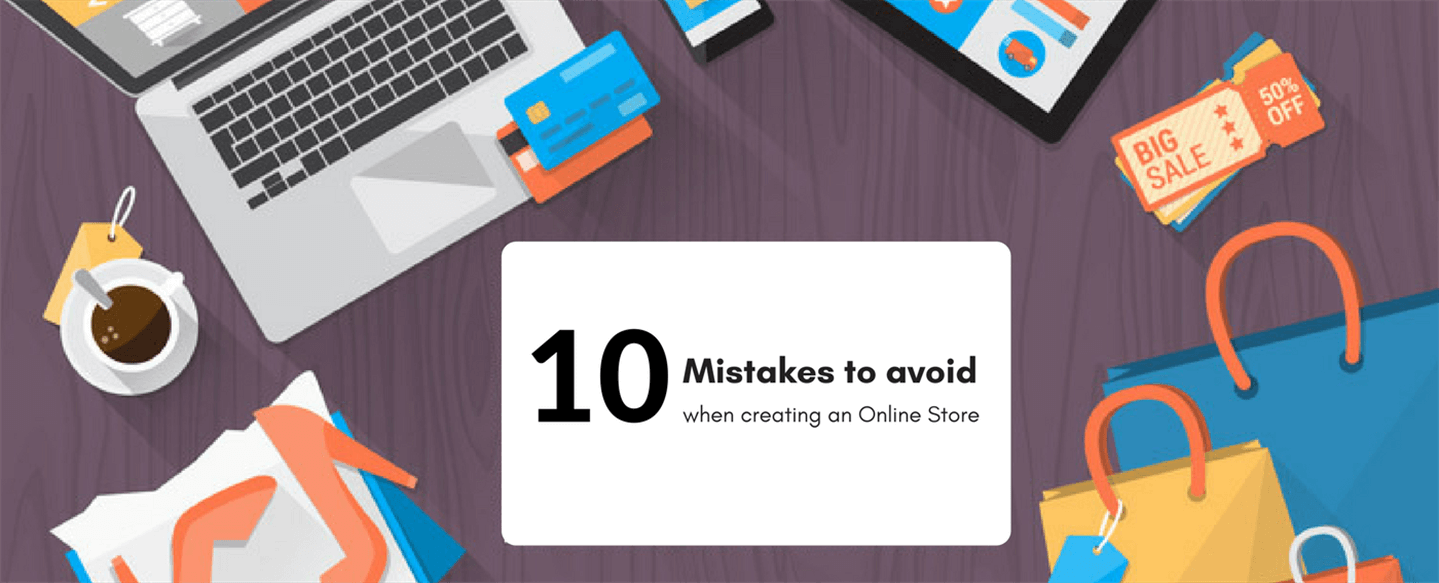
With over 15 years under our belt, we’ve seen them all. Find out below the most common mistakes in creating an online store, and our advice to help get you on the right track.
Website platforms such as Shopify have reduced the need for skilled web developers to create an eCommerce website. The fact is highly qualified coding skills aren’t necessarily required to get you an online retail store. Having said that, although the DIY eCommerce solutions are good at facilitating the administration of websites, ultimately you will get what you pay for.
Be prepared for plenty of frustration along the way, for example; limited 'off the shelf' templates, bugs, plug-in incompatibilities due to updates, hacking issues, poor Search Engine readiness, etc. If your business values the importance of brand standards, custom design and security then steer clear of Shopify and other similar DIY solutions.
With more user-friendly website builders, there's no doubt we have seen a significant rise in web providers. Any internet savvy person is able to call themselves a “Web Developer” without any specific coding qualifications or experience. In some instances choosing a 'freelance web developer' makes sense, but it's important to ask yourself - is your business is in need of a quick fix? or are you looking for a longterm professional web partner that will help grow your online business and achieve your goals? Keep in mind also, that while sometimes hiring amateurs suggests cheaper rates, it usually implies lower productivity levels.
We’ve seen this misconception occur so often we felt the need to write a blog about it. Understanding the interactions and emotional reactions triggered by a website require specialised knowledge and skills. While a Graphic Designer has a certain freedom for creativity in the world of print, a Web Designer has more restrictions and functionality to consider in order to maintain and engage the interaction with your online visitors.
Pure myth. No matter how great or unique your products or services may be, let us break the news for you - saying it’s a competitive world online is an understatement. To any new website clients that knock on our door, we always recommend they allocate a portion of their budget to SEO work, online copywriting and social media.
Every web page should entice your audience to take action. “Get in touch”, “Buy now”, “Find out more”, “Enquiry now”, “Get your FREE consultation”, “Download our brochure”. The principle is simple - make it as easy as possible for your visitors to make a purchase, lodge an enquiry, download more information, or contact you. CTAs can be a powerful marketing and analytics tools when it comes to building a database or measuring your online success. There are many resources to help guide you on what an effective CTA looks like. Most importantly though, a professional web developer will know where to strategically place CTAs to gain the most engagement.
According to the Nielsen Norman Group,you’ve got less than a minute to convince an online visitor of the value of your website, so get straight to the point. We know you have plenty of interesting things to say and knowledge to share, however there’s a specific place for that and your home page isn’t it. The same principle applies to image content - while visuals are necessary, crowded web pages with too many images simply aren’t attractive and can hinder your CTAs.
When it comes to branding, it’s always a good idea to refer to a benchmark. Check Apple’s website and look at the size of their logo. We hear you - “but it’s Apple, they can afford to display their logo like this, my visitors, however, need to be more exposed to my brand." The reality is building a brand is achieved through a series of touch-points. Think about your website from a more customer-centric point of view - “what do I want?, what am I looking for?” - and you’ll quickly figure out why your logo isn’t a priority.
The number of eCommerce CMSs is growing by the day, and it’s a real challenge to choose which one to opt for, especially when your in-house technical skills are limited. After all, it took us 8 years to settle on our chosen website platforms. That’s where working with an eCommerce specialist makes sense - let them guide you on which kind of CMS is appropriate for your online business and why.
Creating and gathering website content, whether textual or visual, is amongst the top challenges for our clients. 90% of the eCommerce website projects we undertake are hampered by the time and effort involved in content creation. We like to ease this process by offering content creation and uploading services, plus CMS training. Underestimating the time constraints around content creation is detrimental to your website project and ultimately your business. Tackle this task as early as you can and don’t be shy in outsourcing services such as web copywriters, professional photographer/videographer, etc.
To help address this issue we created Fuel's Digital Directive. Our extensive industry knowledge and experience in the digital space has enabled us to hand pick a reliable collective of professionals you can access to achieve greater and faster results for your online business. As a boutique agency, we only trust the best and so should you!
While AdWords can help gain website visibility, your ongoing spend should be evenly split between both AdWords and Search Engine Optimisation (SEO). One of our latest blog posts, (in collaboration with Clickthrough, highlights that 70-80% of website visitors ignore paid ads, focusing on organic search results instead. Setting an SEO-friendly foundation for your online store should be first and foremost if you want to compete online in the long term, and a good web/SEO partner should facilitate this process instead of encouraging you to spend on just paid advertising.
Need further guidance?
GET IN TOUCH WITH FUEL TO BOOK YOUR FREE CONSULTATION